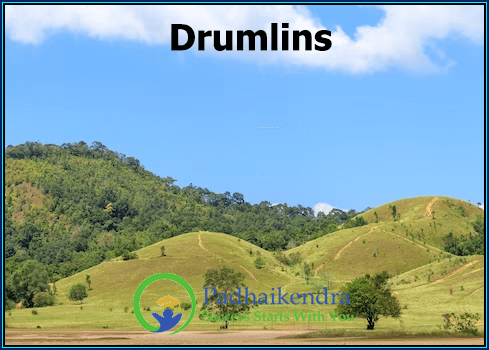Drumlins are another landform created by glaciers. They are typically oval-shaped hills with a steep side facing the direction that the glacier came from and a more gradual slope on the opposite side. Drumlins are composed of glacial till, which is a mixture of sediment and rocks that were scraped up by the glacier as it moved.
Drumlins are thought to be formed by the action of ice flow, as the glacier moves over the landscape. As the ice flows, it can pick up and carry sediment along with it. If the glacier encounters an obstacle, such as a hill or a depression, it can deposit the sediment it is carrying in that location. Over time, repeated deposition and erosion can shape the sediment into a drumlin.
Drumlins can vary in size, from just a few meters tall to over a hundred meters high. They are often found in clusters, forming fields or swarms, and they can cover large areas of the landscape. Drumlins can be found all over the world, but they are particularly common in regions that were covered by glaciers during the last Ice Age, such as parts of North America, Europe, and Asia.
Drumlins can have a significant impact on the landscape around them. They can influence the flow of water and the shape of the land, and they can also be important indicators of past glacial activity. In some cases, drumlins can also be important sources of mineral deposits, as they can contain valuable minerals and metals that were carried along by the glacier.





